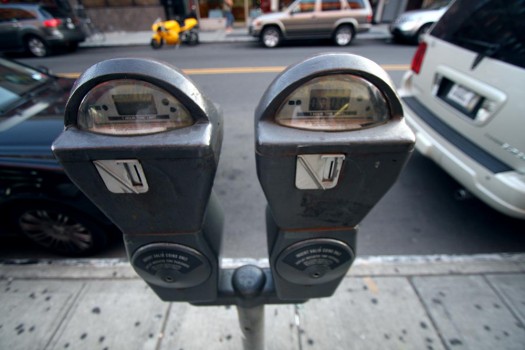
We are celebrating 15 years — and counting — of stories that are deeply researched and deeply felt, that build a historical record of what the city has been.
We are celebrating 15 years — and counting — of stories that are deeply researched and deeply felt, that build a historical record of what the city has been.
This week New York City was fascinated by the unearthing of a portion of an 18th Century ship during excavation at the World Trade Center site. CityRoom provided an account of the discovery and of the urgency of its archaeological documentation, noting that the 30-foot segment of the wooden vessel began deteriorating as soon as it was unearthed, “no longer safe in its cocoon of ooze.” Archaeologists state that it was most likely discarded as part of an intentional landfill that lay ground for what, by 1800, had become Washington Street. That conclusion inspired BLDGBLOG to dig up a 2007 post about San Francisco’s ship-hull foundations, in which another history buried in New York City landfill is reference: the FDR Drive is built atop rubble from World War II Britain.
Relics of more recent histories can be found in cities worldwide, often in the shape of industrial infrastructures left abandoned or deteriorating. Few (so far) have been able to come up with a successful solution for adaptive reuse, but eyes are turning to New York for inspiration. The success of New York’s High Line has prompted calls and visits from public officials and planners from Chicago, Memphis, Rotterdam and Hong Kong, just to name a few, who hope to create similar public amenities back at home.
Record heat has been hitting New York City, but, compared to during heat waves in years past, power outages have been noticeably few. GOOD credits smart-grid technology and demand-response initiatives that alleviate consumption during peak usage to avoid brownouts and blackouts. Two-way digital connections between power providers and consumers’ thermostats or air conditioners can slightly reduce or cycle on/off air conditioning when a threat of an outage occurs. Meanwhile smart meters that allow residents to monitor their usage are becoming more common, a technology that is also being implemented by New York City to track individual water use.
Another way to reduce energy consumption is to turn off the A/C and go outside. New York Magazine has compiled a list of the top nineteen New York City playgrounds for your summer enjoyment. And on three Saturday mornings in August the Department of Transportation will again bring Summer Streets to Park Avenue — but this time with dumpster-style swimming pools!
On Wednesday, Mayor Bloomberg unveiled an electric car charging station in a parking lot near the Lincoln Tunnel. The mayor was joined by HUD Secretary Shaun Donovan, who explained that the pilot program is about more than reducing our reliance on fossil fuels: “By creating jobs manufacturing and installing charging stations for electric vehicles in nine metropolitan regions around the country, we are partnering with industry to provide a low-cost transportation option for tens of thousands of families.”
A few weeks ago we featured Kirsten Hively’s visit to the Candela Structures at the World’s Fair Marina. If that piqued your interest, she just uncovered a research paper from 1966 dealing with the design and construction of those structures themselves.
Plans for a mixed-use development — set to include 600 housing units, 420,000 square feet of commercial space, a YMCA and a park — in what is currently a 1,100-car parking lot is stirring up ethnic tensions between Chinese and Korean business owners. The businesses surrounding the lot are predominately Korean and rely on the lot for customer parking, while the majority of the Chinese businesses are blocks away, and many Korean owners fear that without nearby parking, their customers will simply turn elsewhere.
And finally, happy 75th birthday to the parking meter!

Photo by Flickr user misplacedparadox.
The Roundup keeps you up to date with topics we’ve featured and other things we think are worth knowing about.
The views expressed here are those of the authors only and do not reflect the position of The Architectural League of New York.